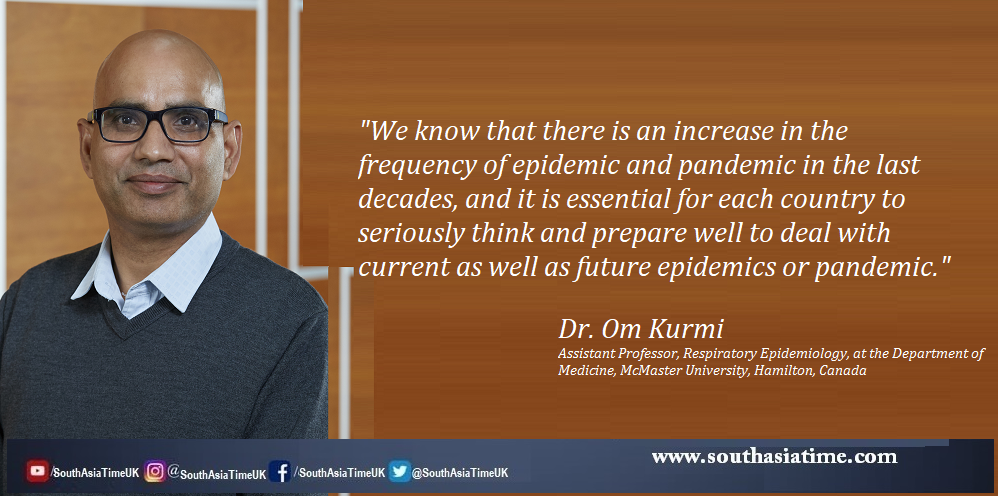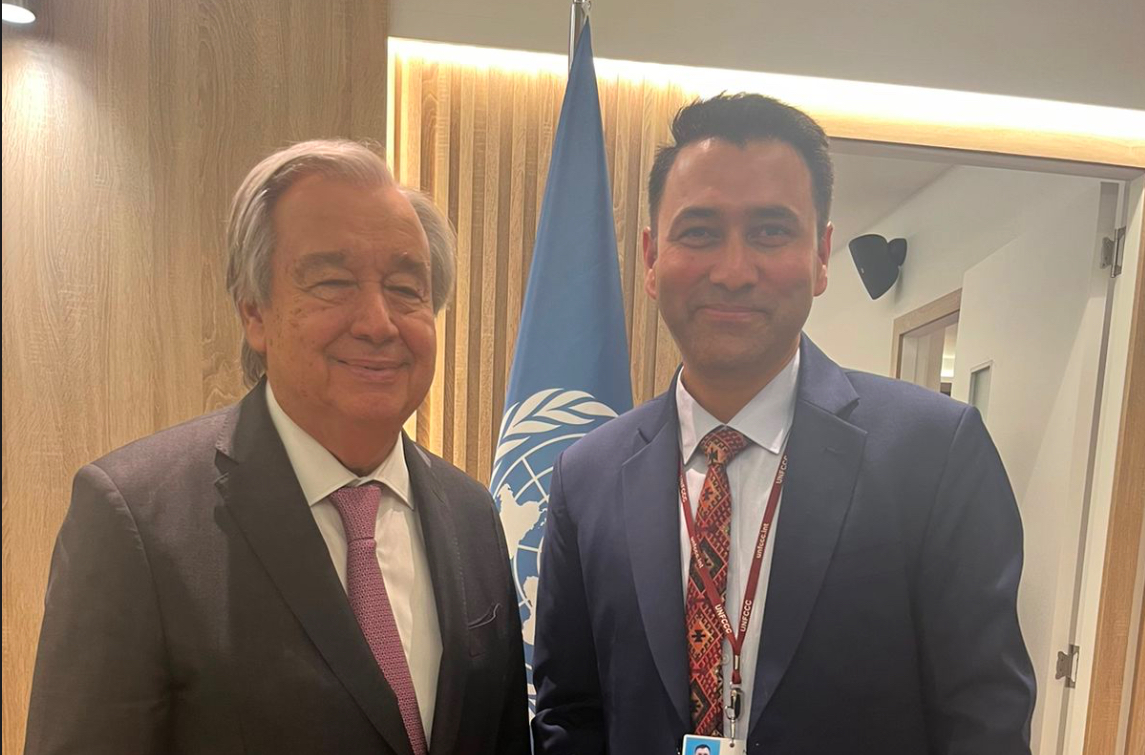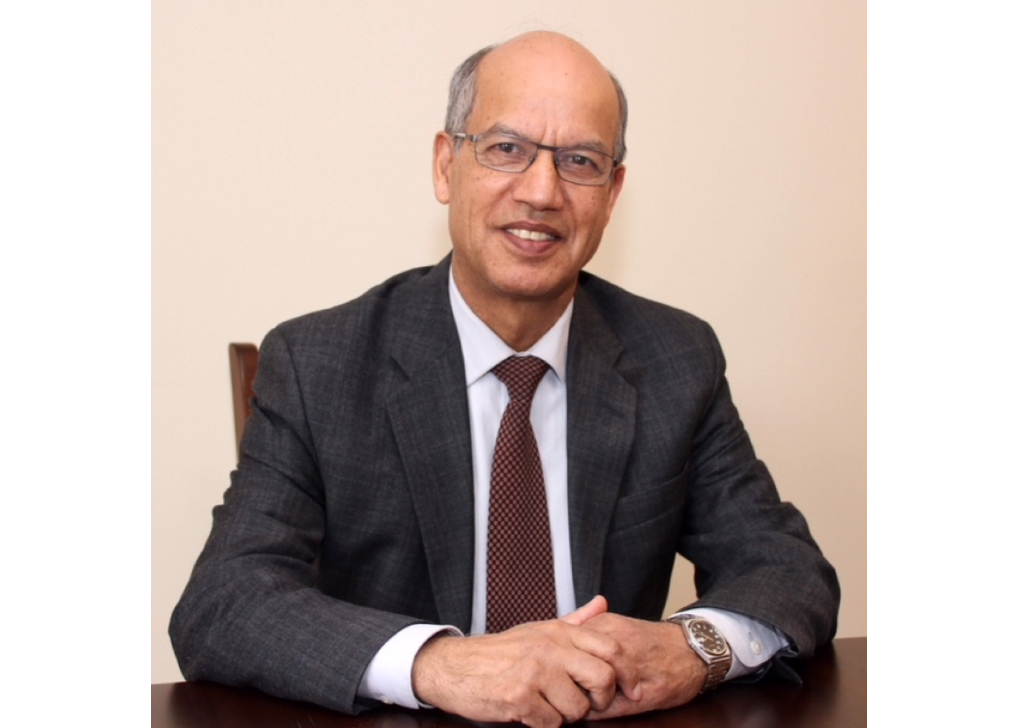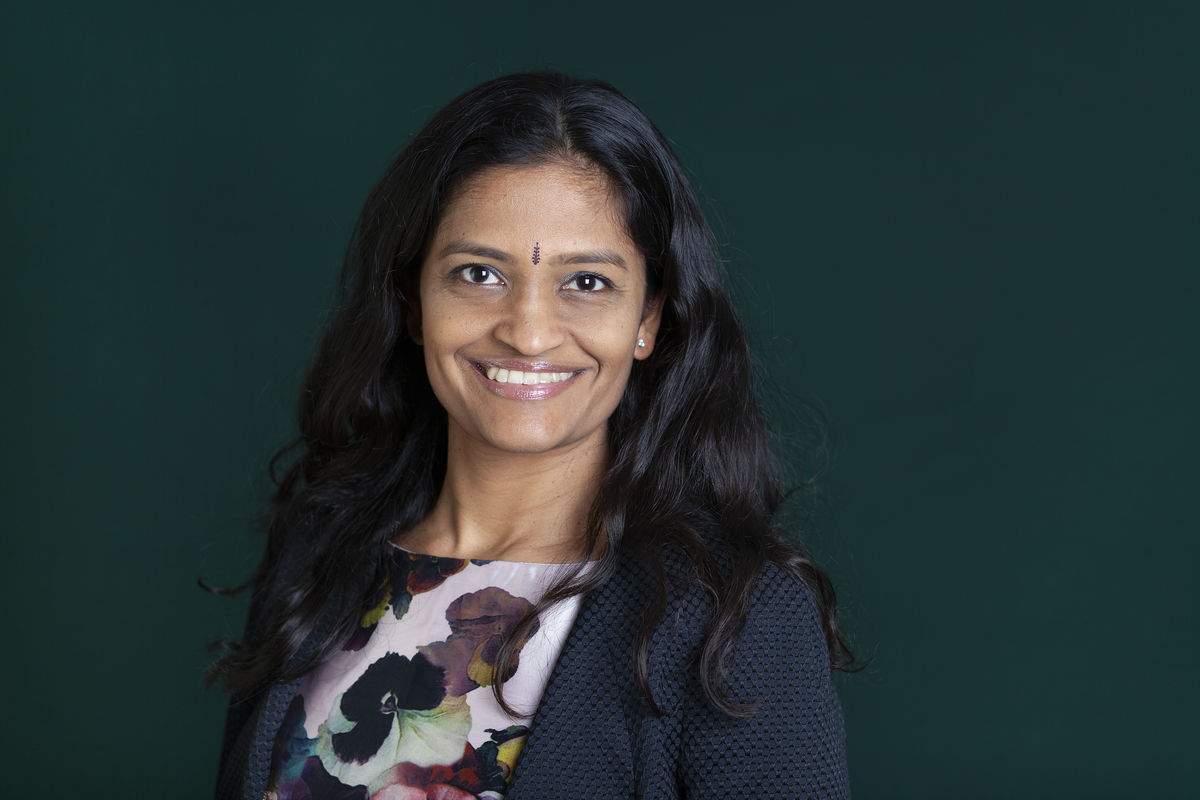‘Strict lockdown measures will have a much more adverse impact on public health and economy in South Asia’


DR OM KURMI is currently working as Assistant Professor, Respiratory Epidemiology, at the Department of Medicine, McMaster University, Hamilton, Canada. He obtained his Ph. D, from the University of Aberdeen, UK. Before moving to Canada, he was working as Senior Respiratory Epidemiologist (2012-17) at the Clinical Trial Service Unit & Epidemiological Studies Unit, Nuffield Department of Population Health, University of Oxford, UK. Dr Kurmi spoke to BHAGIRATH YOGI and JAGAN KARKI on the impact of Covid-19 on South Asian countries and the way forward. Excerpts of the interview:
South Asian governments including India and Nepal, seem to be employing ‘lockdown’ as the main strategy to contain the spread of coronavirus. How effective do you see this strategy?
India and Nepal started nationwide lockdown on 24th March 2020, and since then, both the countries have twice extended lockdown, India has its lockdown extended until 31st May and Nepal until 2nd June.
Almost all countries except very few, such as Sweden and South Korea, enforced lockdown to a different degree at a different time. Many countries started the lockdown around 40-60 days from the first case reported. There were certain countries such as China, South Africa, which started some lockdown measures such as closing the school quite early, i.e. within 25 days of the first case reported. The primary purpose was to flatten the curve so that the healthcare system is not overburdened, can deal with the health crisis in keeping the case-fatality low and also the country gets breathing space to make other preparedness including getting enough personal protective equipment, ventilators etc. I feel by enforcing the lockdown, India has, to a great extent, worked hard to increase their preparedness in conducting extensive testing, tracing and isolation of positive cases. They have also set up 600 certified laboratories to manufacture 450,000 PPE suits per day while in Nepal, we are still short of an adequate amount of PPE and not enough testing is done.
While Nepal has not provided any relaxation on the lockdown, India has started easing the lockdown. In certain cities such as New Delhi, they have opened the shops, taxi/cab and public transport with specific guidelines to make sure that there the crisis does not go out of control. I feel both countries need to increase the testing and tracing significantly but also need to ease down the lockdown in a phased manner. Continued strict lockdown measures will have a much more adverse impact on the health of individuals, particularly those living at the bottom rung of the economic ladder.
But there will be huge trade offs especially in terms of loss of jobs, a huge impact on the economy and businesses? How should governments try to strike a balance?
I agree with the need for a trade-off. I think neither is it the right time to stop the lockdown completely nor is it beneficial anymore to keep enforcing strict lockdown. We should strike a balance, so start giving relaxation in certain economic activities, but of course with specific guidelines such as keep social distancing, limiting big gathering etc. and also being vigilant and diligently monitoring the situation very closely. According to the UN’s labour body, globally, during the 2nd quarter of this year, there will be equivalent of 195 million job loss, and worldwide GDP loss will be around 3%. A large section of the Indian and Nepalese population is living well below the poverty line, and the loss of job and no economic activities have brought misery, which is going to have a prolonged impact. For example, children are not able to go to schools and it is having a significant effect on their learning, increasing mental health problems and physical health problems. Many children in rural areas get a free day meal while in school, but this has stopped now. There is an increase in mental health problems among adults, increased domestic violence, and probably some studies suggest there might be a large number of unwanted pregnancies, which will have long term consequences. Over two-thirds of the Indian and Nepali population work in the farming sector. Had there been no lockdown, farmers around this period would be preparing their agricultural land for rice paddy plantation, which they are not able to do currently. They cannot go to petrol stations to buy petroleum products, seeds are not available, and where they are available, farmers need to pay 2 to 3 times the regular price. I, therefore, think the government should intervene immediately in easing the lockdown and allowing agricultural activities, some economic events in the cities, to avoid significant problems in the future.
From an epidemiological point of view, how do you see the spread of the virus in South Asian countries and the rate of fatality? Is it in line with the global trend?
Globally, so far, there have been around 4.8 million COVID-19 positive cases. Out of the 4.8 M cases, around 1.79M have recovered, and there have been 318K deaths. Currently, in Nepal, there have been around 375 COVID-19 cases, out of which 36 have recovered, and two deaths have been reported. Similarly, in India, out of total 101K cases, about 39K have recovered, and 3163 have died. Many researches have suggested that the actual number of infections is much higher compared to what is known, and it is estimated that about 3-10% of the population could have been infected by now, with wide variation among countries and their regions. When you compare data from Nepal and India to other geographical areas of the world, our number both in terms of infection and case fatality is much lower relative to the population. Countries like Germany, South Korea, Australia and New Zealand have a rapid recovery and done very well.
In contrast, countries like Italy, Spain and France have a slower recovery, and we are yet to see overall recovery in the US, UK, Brazil, India, Nepal, Russia etc. as their active cases are more than the recovery. However, the speed of active cases is increasing rapidly in countries such as Brazil, Ireland, Peru, Mexico, Iran, UAE, the US, Ecuador, Canada and Nepal. In contrast, it is slowing down in countries like India, Pakistan, Russia, Singapore, etc. If you look at the death rate per million population in India and Nepal, they are much lower than most of the other countries.
The Covid-19 has shown, once again, that what matters the most is how robust and effective our health systems are during crises like a pandemic. What do you think should the governments of South Asia do to address health challenges like the COVID 19?
The critical aspects of dealing with an epidemic or pandemic are based on countries’ preparedness on six key areas: First, prevention of the emergence of the release of pathogens; second, early detection and reporting of epidemics of potential international concern; third, rapid response to and mitigation of the spread of an outbreak; fourth, sufficient and robust health system to treat the sick and protect health workers; fifth, commitments to improving national capacity, financing plans to address gaps, and adhering to global norms; and sixth, overall risk environment and country vulnerability to biological threats.
Judging by these above six parameters, it is now almost clear that none of the countries, whether they are low-, middle- and high-income, were adequately prepared to deal with the current pandemic caused by SARS-CoV2. Out of 195 countries, in last October, 13 countries (including USA, UK, Netherlands, Canada, etc. ) were classified as the most-prepared countries to deal with the future pandemic. Similarly, 109 countries, including India and Nepal, were grouped into a more prepared group. In contrast, the remaining 73 countries, mainly most of the sub-Saharan African countries, were classified as least prepared countries. In some of the most prepared countries such as Germany, Canada and the USA, there was no case fatality within 40 days of the first case reported; however, after that, there has been an increase in the number of case fatalities. We know that there is an increase in the frequency of epidemic and pandemic in the last decades, and it is essential for each country to seriously think and prepare well to deal with current as well as future epidemics or pandemic.
Nepal has announced that it will establish the Center for Disease Control (CDC) and the Food and Drug Administration (FDA). Will it make the role of the Department of Health (DoH) redundant? How should these two new institutions be established- in your view?
I am glad that the Nepali government has announced the establishment of the Center for Disease Control (CDC) and Food and Drug Administration (FDA), which is quite similar in concept to that of the USA. There might be some confusion in the early period on how these two new institutions will work and also the role of the existing Department of Health (DoH). Although their establishment should be welcomed, it is yet to be seen how effective they will be. I feel there should be a clear separation of duties of each of these institutions. Hope experts are recruited and allowed to run the newly established institutions rather than being employment generation for political appointees, as we see in many institutions in Nepal. I hope the CDC ‘s primary role will be to concentrate on monitoring and assessing infectious diseases, particularly that could have the potential to develop into an epidemic or pandemic. National CDC should also build and establish provincial and local CDC as they would help to carry out rigorous surveillance and improve response to local levels. They could bring in the local and regional health workers, including community health workers, to promote activities such as vaccinations. They can provide essential data for the health ministry who would make evidence-based policy. I think the FDA’s role should be concentrated in ensuring the safety, efficacy and security of medical devices, monitoring drugs and providing a license to new drugs and testing their effectiveness as well. They could also work on the safety of other products such as particular food, cosmetics etc. The Health Ministry should play the role of facilitator among the above two groups and make sure that there are proper coordination and collaboration among all the three institutions, including framing the right policy.
Are you also advising provincial governments of Nepal on public health issues? How do you see the role of provincial governments and local governments to fight with the coronavirus and ensure that people get the necessary minimum health facilities during a health crisis?
I am not officially advising any provincial governments of Nepal on public health issues. However, I have been meeting public health and medical experts to exchange information based on my understanding. I have also been talking to elected representatives about many other issues of public health concern, including air pollution, lifestyle factors and occupational health, which are directly related to human health. My understanding is that the provincial and local governments are concerned about the impact of the COVID-19 on human health and want to do all they can within the available resources they have at their disposal. However, I feel there is a real lack of evidence-based policy, and many advisers lack the expertise to deal with this crisis. This does not mean that there is a lack of experts to deal with the current and any similar future epidemic or pandemic in Nepal. There should be a mechanism to recruit individuals with domain knowledge to deal with this sort of crisis, which is lacking. One of the other issues is we do not have an integrated system of real-data sharing capabilities, and this should be established. This pandemic has shown that we lack laboratory facilities for testing, a significant shortage of PPE and a lack of a mechanism to share authentic information. I hope the government has learnt their lesson from this pandemic and will work on with sincerity and honesty to make sure that we are well prepared to deal with a similar situation in the future.



















Facebook Comments